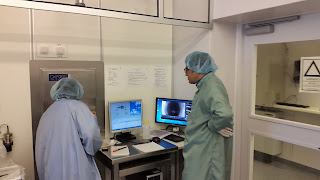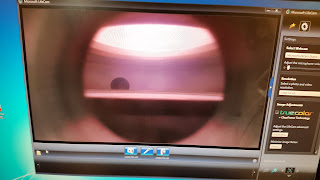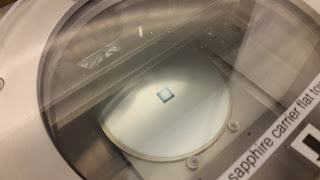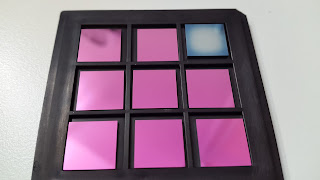As reported by HZ Berlin (HZB) - A team headed by Prof. Silke Christiansen has developed a transparent electrode with high electrical conductivity for solar cells and other optoelectronic components – that uses minimal amounts of material. It consists of a random network of silver nanowires that is coated with aluminium-doped zinc oxide. The novel electrode requires about 70 times less silver than conventional silver grid electrodes, but possesses comparable electrical conductivity.
The electrodes for connections on the “sunny side” of a solar cell need to be not just electrically conductive, but transparent as well. As a result, electrodes are currently made either by using thin strips of silver in the form of a coarse-meshed grid squeegeed onto a surface, or by applying a transparent layer of electrically conductive indium tin oxide (ITO) compound. Neither of these are ideal solutions, however. This is because silver is a precious metal and relatively expensive, and silver particles with nanoscale dimensions oxidise particularly rapidly; meanwhile, indium is one of the rarest elements on earth crust and probably will only continue to be available for a few more years.
Manuela Göbelt on the team of Prof. Silke Christiansen has now developed an elegant new solution using only a fraction of the silver and entirely devoid of indium to produce a technologically intriguing electrode. The doctoral student initially made a suspension of silver nanowires in ethanol using wet-chemistry techniques. She then transferred this suspension with a pipette onto a substrate, in this case a silicon solar cell. As the solvent is evaporated, the silver nanowires organise themselves into a loose mesh that remains transparent, yet dense enough to form uninterrupted current paths.
The electrodes for connections on the “sunny side” of a solar cell need to be not just electrically conductive, but transparent as well. As a result, electrodes are currently made either by using thin strips of silver in the form of a coarse-meshed grid squeegeed onto a surface, or by applying a transparent layer of electrically conductive indium tin oxide (ITO) compound. Neither of these are ideal solutions, however. This is because silver is a precious metal and relatively expensive, and silver particles with nanoscale dimensions oxidise particularly rapidly; meanwhile, indium is one of the rarest elements on earth crust and probably will only continue to be available for a few more years.
Mesh of silver nanowires
Manuela Göbelt on the team of Prof. Silke Christiansen has now developed an elegant new solution using only a fraction of the silver and entirely devoid of indium to produce a technologically intriguing electrode. The doctoral student initially made a suspension of silver nanowires in ethanol using wet-chemistry techniques. She then transferred this suspension with a pipette onto a substrate, in this case a silicon solar cell. As the solvent is evaporated, the silver nanowires organise themselves into a loose mesh that remains transparent, yet dense enough to form uninterrupted current paths.
Figure from graphical abstract (doi:10.1016/j.nanoen.2015.06.027)
Encapsulation by AZO crystals
Subsequently, Göbelt used an atomic layer deposition technique to gradually apply a coating of a highly doped wide bandgap semiconductor known as AZO. AZO consists of zinc oxide that is doped with aluminium. It is much less expensive than ITO and just as transparent, but not quite as electrically conductive. This process caused tiny AZO crystals to form on the silver nanowires, enveloped them completely, and finally filled in the interstices. The silver nanowires, measuring about 120 nanometres in diameter, were covered with a layer of about 100 nanometres of AZO and encapsulated by this process.
Subsequently, Göbelt used an atomic layer deposition technique to gradually apply a coating of a highly doped wide bandgap semiconductor known as AZO. AZO consists of zinc oxide that is doped with aluminium. It is much less expensive than ITO and just as transparent, but not quite as electrically conductive. This process caused tiny AZO crystals to form on the silver nanowires, enveloped them completely, and finally filled in the interstices. The silver nanowires, measuring about 120 nanometres in diameter, were covered with a layer of about 100 nanometres of AZO and encapsulated by this process.
Published in Nano Energy, Vol. 16, Sept. 2015: "Encapsulation of silver nanowire networks by atomic layer deposition for indium-free transparent electrodes". Manuela Göbelt, Ralf Keding, Sebastian W. Schmitt,Björn Hoffmann, Sara Jäckle, Michael Latzel, Vuk V. Radmilović,Velimir R. Radmilović,Erdmann Spiecker, Silke Christiansen.
doi:10.1016/j.nanoen.2015.06.027



%20(1).png)














